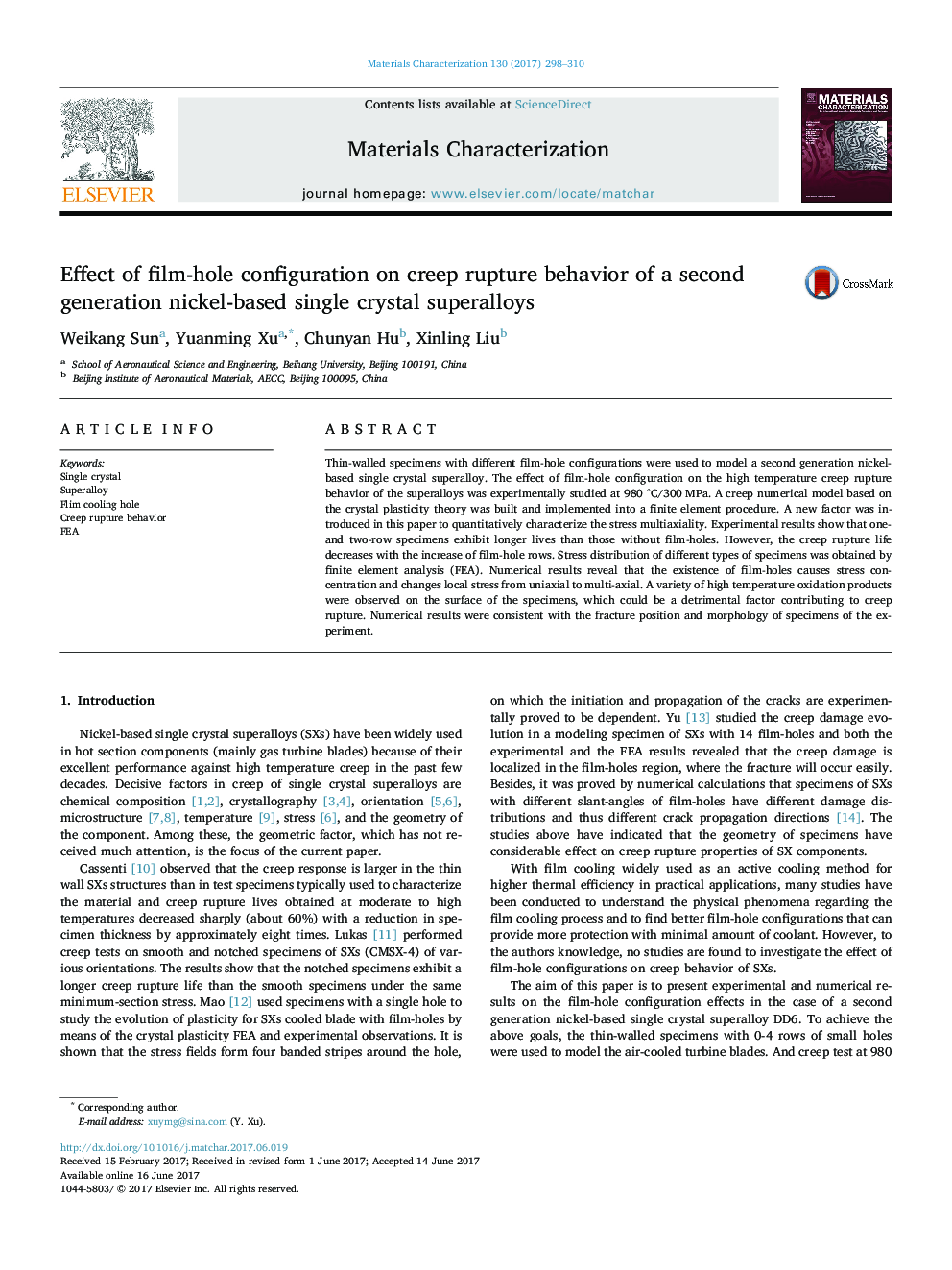| Article ID | Journal | Published Year | Pages | File Type |
|---|---|---|---|---|
| 5454718 | Materials Characterization | 2017 | 13 Pages |
â¢We present both the experimental and numerical results regarding the film-hole configuration effects on the creep rupture behavior of a second generation nickel-based single crystal superalloy DD6.â¢A new factor was introduced in this paper to quantitatively characterize the stress multiaxiality.â¢Variety of high temperature oxidation products were observed on the surface of the specimens.
Thin-walled specimens with different film-hole configurations were used to model a second generation nickel-based single crystal superalloy. The effect of film-hole configuration on the high temperature creep rupture behavior of the superalloys was experimentally studied at 980 °C/300 MPa. A creep numerical model based on the crystal plasticity theory was built and implemented into a finite element procedure. A new factor was introduced in this paper to quantitatively characterize the stress multiaxiality. Experimental results show that one- and two-row specimens exhibit longer lives than those without film-holes. However, the creep rupture life decreases with the increase of film-hole rows. Stress distribution of different types of specimens was obtained by finite element analysis (FEA). Numerical results reveal that the existence of film-holes causes stress concentration and changes local stress from uniaxial to multi-axial. A variety of high temperature oxidation products were observed on the surface of the specimens, which could be a detrimental factor contributing to creep rupture. Numerical results were consistent with the fracture position and morphology of specimens of the experiment.
Graphical AbstractDownload high-res image (385KB)Download full-size image
